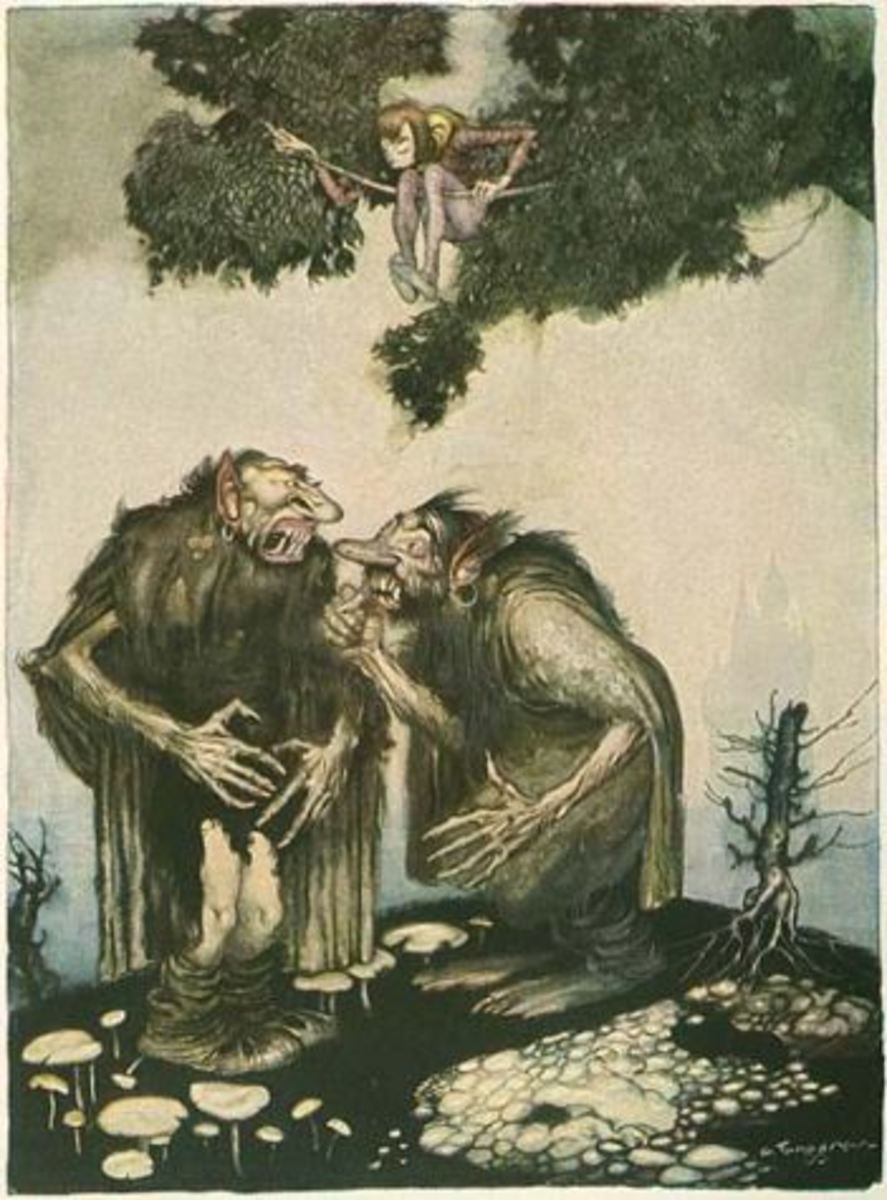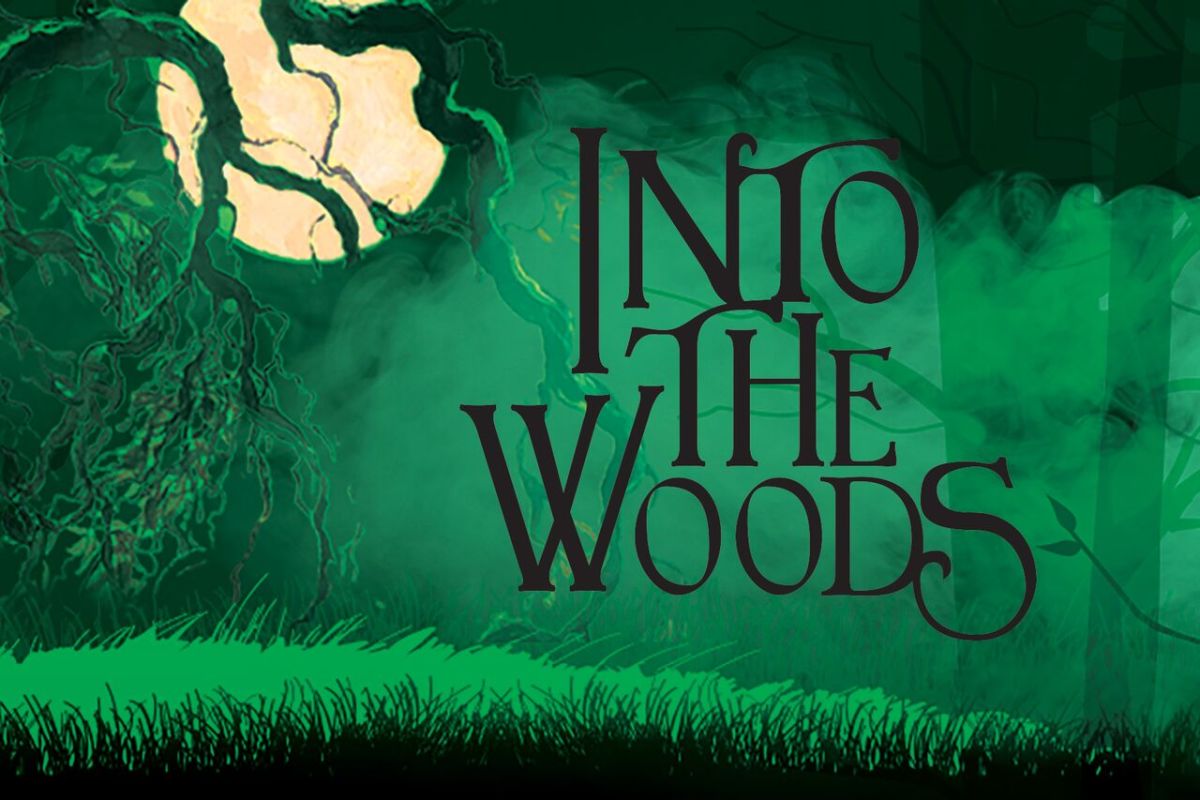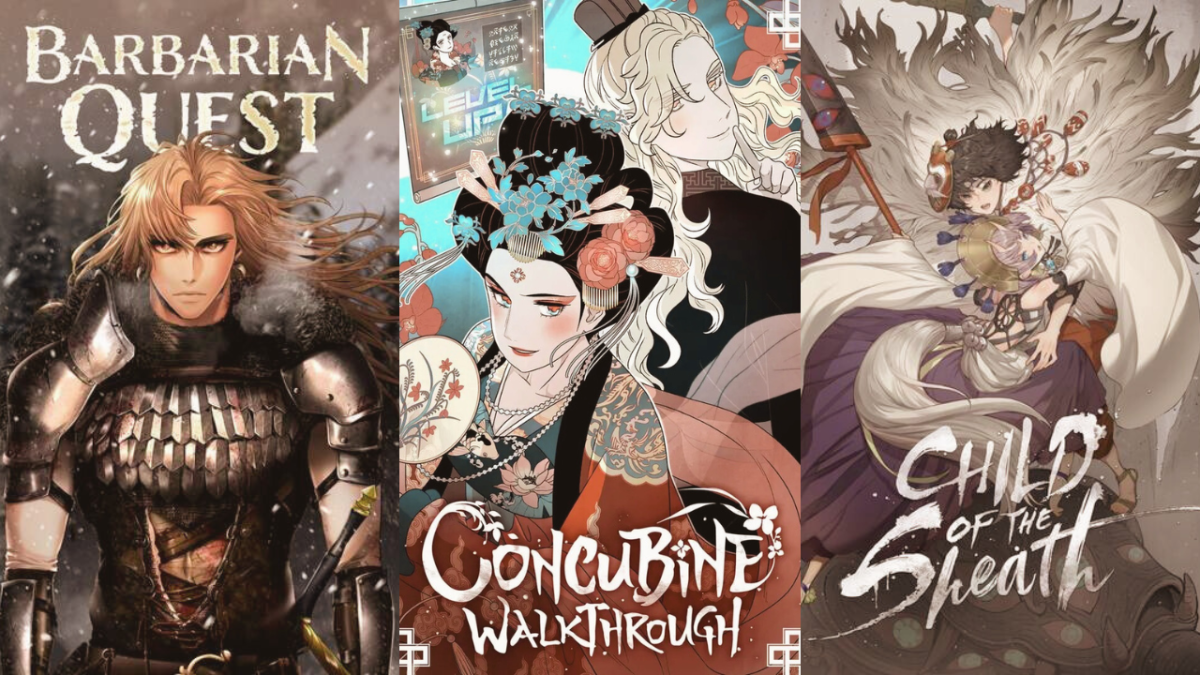12 Inspiring Christmas Fairy Tales ~ A Special Contribution to Humanity One World (H.O.W.)
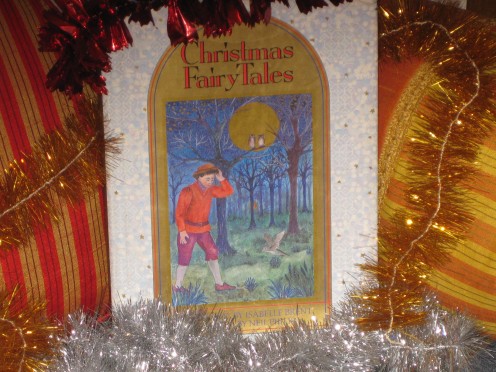
Many Christmases ago......
Several years ago, when I was a child, my parents had this cute habit of surprising me with some books on Christmas Eve. I clearly remember that this book titled 'Christmas Fairy Tales' was one of my earliest books I received from my father on Christmas Eve. My father had often travelled abroad and he purchased this book at a foreign bookstore. He just breezed through the book and felt that it was suitable for me. That time I preferred picture books. This book was more of content and less of pictures. However, I was enchanted by this book packed with an engaging introduction, twelve bewitching stories and stunning gold-leaf illustrations. I tried to get the head and tail of each story and slowly enjoyed reading all of the twelve stories. This was indeed a wonderful book that enabled me usher in the gaiety and exuberance of Christmas. I have kept this book carefully so that I can give it to my children in the future.
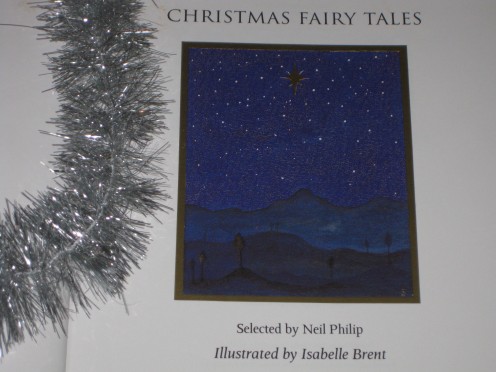
A notable introduction
The editor and translator of this book, Neil Philip mentioned in the introduction that he selected twelve special stories that were not only associated with the spirit of Christmas but also carried Christmas values and virtues inherent in each story. He discussed about his apt selection of stories as well as the authors, particularly Hans Christian Andersen whose three stories were part of the collection.
Neil narrated one interesting incident that happened many years ago when he and his wife visited a gift store during the Christmas season. He noticed a strange old man speaking to a young shop assistant. Then the assistant told Neil that it was indeed Santa Claus gifting her with a glittering ring and told her "May all your dreams come true" The assistant's colleague brushed off her firm claims as rubbish. However, Neil and the assistant both believed that it was quite true. Neil stated that Christmas could work magic in any way and even turn a Scrooge-like character into a kind-hearted person like it did for the old man who gave the gift and wondrous line to the assistant. Neil justified his belief in the charm and wonder of Christmas with this incident and collection of selected stories.
Neil collaborated with Isabelle Brent, an amazing illustrator, to create what I call a real treasured collection of twelve gems!
12 inspiring stories
Here we cruise through one story after another narrated briefly and my moral lessons inferred from each story. These twelve stories will not only ignite your imagination but also will give you a new perspective of life for the betterment of humanity in our world.
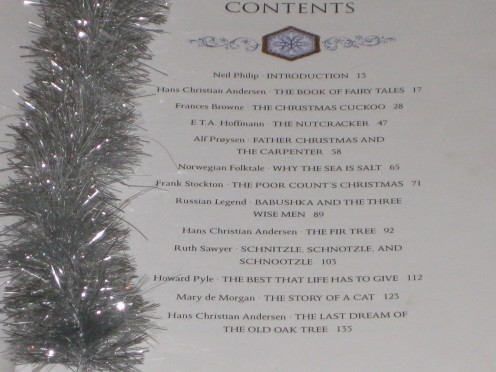
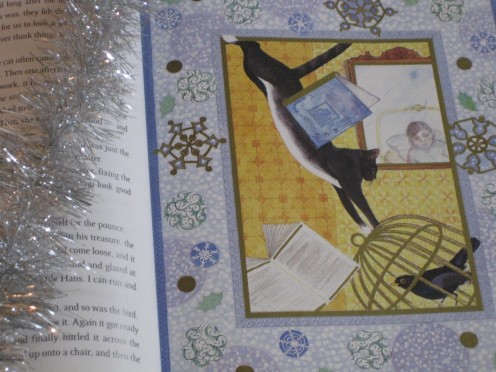
Story 1. The Book Of Fairy Tales
This amazing story by Hans Christian Andersen is about a crippled boy named Hans hailing from a poor family. His parents worked as gardeners for the rich and good-natured squire and his equally kind-hearted wife. Hans received a book of fairy tales as a Christmas gift from the squire's wife. Hans was confined to bed all the time and was unable to attend school. However, he benefited so much from reading his new book. It enabled him to gain plenty of knowledge and acquired the skill of story-telling. He related a few stories to his wonder-struck parents. This also attracted the attention of a school-master who was impressed with Hans and often paid him with his educative visits. One day, a cat tried to jump upon the caged bird, another gift given to Hans by the squire's wife. Hans leapt up to save his bird and miraculously, he was able to walk and run well. Not only he was happy but also his family, the rich couple and the school-master. He was able to study well and grew up to be a well-educated man with the book of fairy tales still in his possession.
Moral lesson inferred from this story:
This story taught us to have faith in ourselves as well as in our accomplishments in life such as serving humanity in our world.
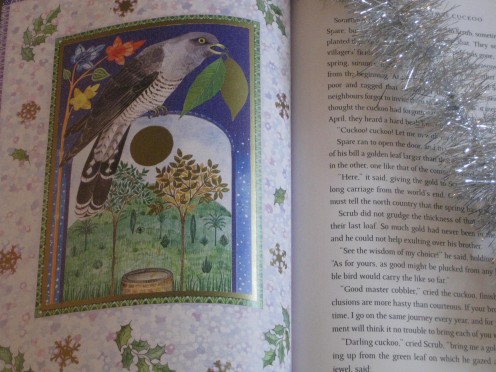
Story 2. The Christmas Cuckoo
This spellbinding story by Frances Browne is about two poor brothers named Scrub and Spare, both working as cobblers. One Christmas night, a talking cuckoo sought shelter at their hut. The cuckoo decided to reward their hospitality by bringing one leaf each for them every spring. It told the brothers about the two trees - one was called golden tree due to its golden leaves and the other one was called merry or wise tree with its evergreen green-colored leaves. Spare asked for the merry leaf and Scrub asked for the golden leaf. The possession of such leaves changed the lives of two brothers. Scrub became rich and got married. He also deserted Spare who got poorer and lonelier but merrier and wiser than before. Gradually, the rich people began to realise the wonders of Spare's green leaves and went to Spare for solving their problems. The king took Spare under his wing. This caused the envious Scrub and his wife to make their journey to the kingdom and seek their luck. On their journey, Scrub and his wife were robbed of their golden leaves by the witch and her dwarf-sons. Meanwhile, Spare lost his doublet carrying his merry leaves which was thrown away by his imprudent page-boy and later, it was found by Scrub. Thus with the merry leaves in his possession, Scrub and his wife forgot all about their desires for wealth and now lived happily in a new hut. One day, Spare went looking for his merry leaves and unexpectedly met Scrub and his wife and they got reunited. They all lived happily with more green leaves added to their collection brought by the cuckoo every spring.
Moral lesson inferred from this story:
This story taught us that money does not buy happiness and we should be happy with what we have. True happiness definitely change our world for the good of humanity.
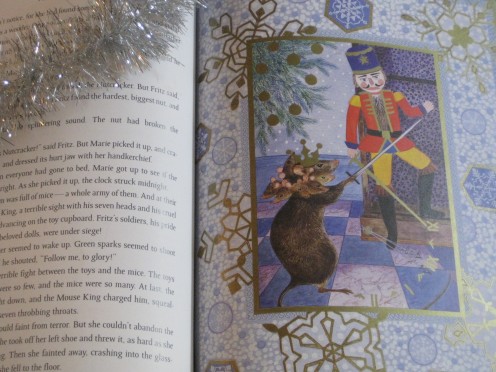
Story 3. The Nutcracker
This charming story by E.T.A. Hoffmann is about a girl named Marie who was given a soldier-like nutcracker by her godfather on Christmas Eve. After witnessing a fight between her toys and mice, she learnt from her godfather that the nutcracker was the latter's nephew under a spell. After the nutcracker defeated the troublesome seven-headed mouse-king, the spell broke thanks to Marie's love for her enchanted doll. The nutcracker turned into a handsome young man. He took Marie to his fascinating kingdom and lived happily ever after. I am sure that many of you are already familiar with this story thanks to its famous ballet version.
Moral lesson inferred from this story:
This story taught us to love one another and accept ourselves for who we are. We should dispel hatred and replace it with love for humanity in our world.
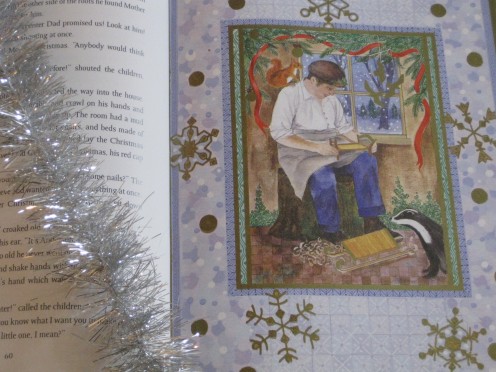
Story 4. Father Christmas And The Carpenter
This enrapturing story by Alf Prøysen is about a carpenter named Anderson deciding to dress up like Father Christmas and surprise his children at home. On his way, he met another man dressed up just like him. The other man was none other than Father Christmas himself. They decided to swap their roles and visit each other's children secretly. Much to Anderson's surprise, Father Christmas requested him to visit the former's home only in his carpenter costume and bring his tools as his children wanted to see a carpenter. Anderson readily agreed. Then this story chronicled Anderson's visit to Father Christmas's tree home, creation of gifts out of wood for the latter's whole family and his reception of heartwarming responses from the family. Anderson wished them Merry Christmas and left for his home. He again met Father Christmas who told him that the former's children still thought that the latter was their father. Anderson bid him goodbye and returned home to find that his children were already loaded with gifts presented by Father Christmas.
Moral lesson inferred from this story:
This story taught us that giving is better than receiving and we should not expect anything in return. Giving means devoting ourselves in favor of humanity in our world.
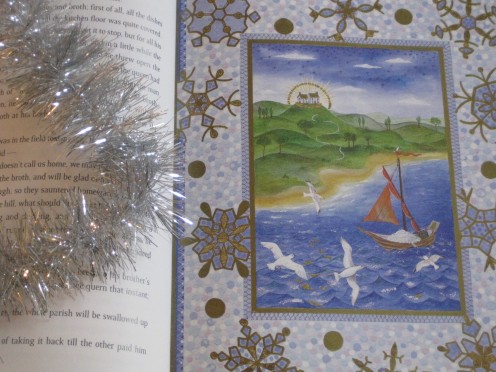
Story 5. Why The Sea Is Salt
This interesting Norwegian folktale is about a poor man who went to hell as ordered by his cruel rich brother. There he bargained with the Devil for the latter's magical quern. The poor man tested his magical quern by chanting the commanding words taught by an old man in Hell. It churned out many tasty dishes, much to the joy of the poor man and his wife and thus they led a comfortable life. This wonder caught the ears of his rich brother and he got envious and greedy. He succeeded in pursuing his brother to lend him the quern by paying him a lot of money. The delighted rich man took the quern, dismissed everyone from his house and commanded it to churn fish and soup. But he did not know the words of command required to to stop it as his clever brother did not tell him. The quern started churning fish and soup till these foods filled the house. The frightened rich man took to his heels and the people were surprised to see the flood of fish and soup on the way. The rich brother went to his brother and beseeched him to retrieve the quern. The latter commanded the quern to stop and thus things returned to normal. One day, a captain heard of the magical quern and desired to possess it. He offered the quern-owner a large sum of money for it. With a heavy heart, the owner gave it to the captain. The excited captain commanded it to grind salt while sailing in his boat. The quern kept grinding salt till the ship had sunk. The Norwegian legend is that the quern is still existing on the sea-bed, grinding all the time and no wonder that the sea is salty till this day!
Moral lesson inferred from this story:
This story taught us not to be too materialistic and greedy. Non-materialism promotes a better life for humanity in our world.
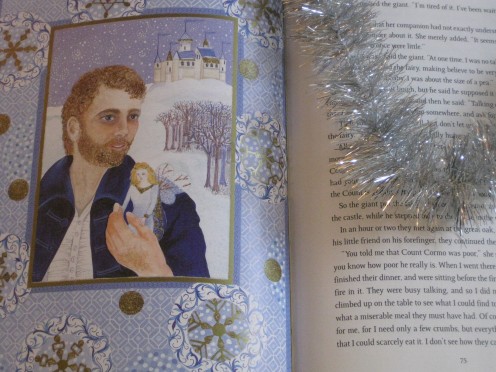
Story 6. The Poor Count's Christmas
This heartwarming story by Frank Stockton is about a generous Count and his good wife, a Countess, who were both fond of children and invited them to their castle on Christmas day every year. As a result of their charitable deeds, the couple became poverty-stricken. But that did not stop them from hosting a Christmas party for the children and in order to make money for the festivities, the Count decided to sell his last possession - an expensive family bedstead. Meanwhile, the young giant named Feldar was on his way to his cousin's castle to claim his inheritance from his late great-great uncle. Feldar's friend was a fairy named Tillette who accompanied him on his mission. On their way, they discussed about the poor condition of the Count and Countess. Then Feldar artfully took plenty of wealth from his selfish cousin's treasury room and quickly left with Tillette. On Christmas day, the children who cooperated with Feldar and Tillette, surprised the Count and Countess with a beautiful Christmas tree laden with gifts labelled by each child as well as a great feast. The Count and Countess retained most of their old possessions, including the family bedstead thanks to the kind-hearted Feldar. The couple were overwhelmed by this unexpected turn of events. The couple happily adopted Feldar as their son as suggested by Tillette and they all lived happily ever after.
Moral lesson inferred from this story:
This story taught us that one good deed deserves another and paying it forward is an ideal key to improving humanity in our world.
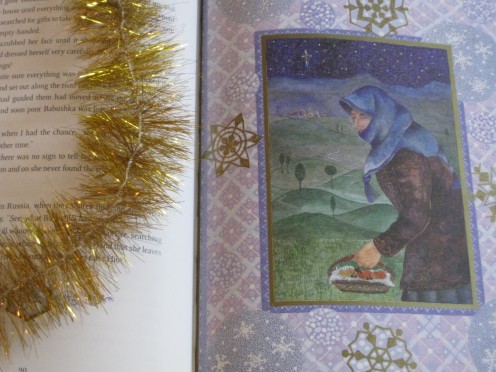
Story 7. Babushka And The Three Wise Men
This engaging Russian legend is about three wise men who set out with gifts to see the newborn baby who was destined to be the saviour of the world. Out of weariness, they sought hospitality at a cottage. Its hospitable resident named Babushka made them comfortable and gave them food. The three wise men, pleased with her goodness, invited her to join them on their journey to see the future saviour. But Babushka insisted on cleaning her house first. On seeing the bright star, the three wise men decided to leave. After cleaning her house, she refreshed herself and collected the gifts for the newborn baby. But the star which acted as the guiding sign for the three wise men had drifted away. Babushka was very disappointed and severely regretted on missing this golden opportunity. The legend is that Babushka did not give up and continued to travel till this day. She put gifts in the stockings of children, hoping that one of them is the newborn baby that she desired to meet years ago.
Moral lesson inferred from this story:
This story taught us not to miss a good opportunity that comes in our way. When a worthy opportunity such as fighting for humanity in our world knocks on your door, grab it and make the most of it.
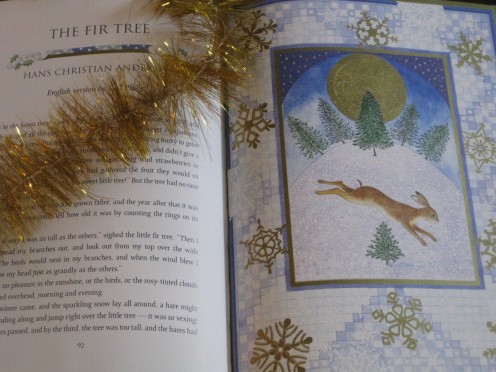
Story 8. The Fir Tree
Another marvellous story by Hans Christian Andersen is about a young fir tree which always hoped for better things such as growing taller than other trees and become a grand Christmas tree. It kept getting impatient day after day and was often advised by nature to enjoy its young life. But it remained stubborn. Finally, its time had come and it became a beautiful Christmas tree laden with plenty of ornaments and gifts. The fir tree heard the story told by a man to a group of children and enjoyed it. It also made friends with mice and related the same story as well as its old days to the attentive mice. This went on for days but it did not last for long. One day, the fir tree was uprooted and placed in the garden-ground. It was delighted to be surrounded by nature again but then it realised that its life would end soon. It regretted its mistake of not enjoying life when it was a youthful tree. Before it became firewood, it recalled its youthful days and glorious Christmas moments and thus was the end of it.
Moral lesson inferred from this story:
This story taught us not to aspire too high and be aware of what lies ahead. Being practical and setting our expectations in a right manner would enable us to achieve our goals including helping humanity in our world.
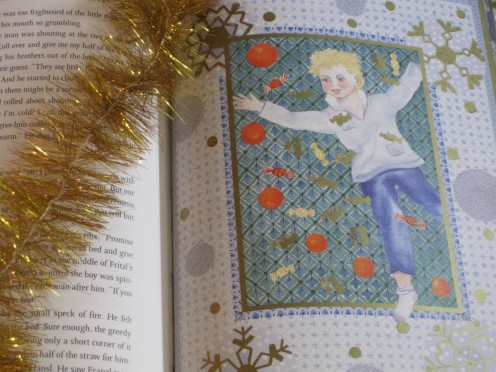
Story 9: Schnitzle, Schnotzle and Schnootzle
This jolly story by Ruth Sawyer is about three boys named Fritzl, Franzl and Hansl who lived with their father who was a poor cobbler. In spite of their poor life, they remained positive and happy. Their father would bring them good food whenever he had the chance and he called this special feast day "Schnitzle, Schnotzle and Schnnotzle" for the sake of reference for his beloved sons. On Christmas Eve, the cobbler left for his duty and his sons were alone in their hut. Suddenly, they heard someone knocking on their door. Though they were warned by their father not to open the door and let strangers in, the continuous knocking and begging voice finally persuaded them to open the door. They saw a strange pint-sized man with goblin features. Unknown to them, this small man was the king of goblins and loved to work mischief but for good reasons. The goblin king spoke rudely to the little boys and kept on irritating them all the time. Suddenly, the goblin king showered them with loads of gifts including fruits, desserts, and money. Then the kindly goblin king vanished from the scene. Then the boys' father came home. The boys related this wonderful incident to their father and the latter believed that this was actually done by the famous goblin king. This optimistic story ended with all three boys saying loudly " Schnitzle, Schnotzle and Schnootzle!"
Moral lesson inferred from this story:
This story taught us that positivity automatically promotes happiness and peace of mind. Widespread positivity works a lot of wonders for humanity in our world.
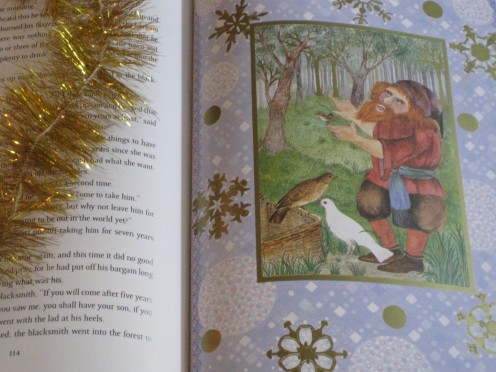
Story 10. The Best That Life Has To Give
This entertaining story by Howard Pyle was the only story in that collection with no mention of Christmas word and was very much influenced by the works of Grimm Brothers but its title definitely has a related meaning. This story is about a poor blacksmith who kept bargaining with a bad dwarf for the former's son. One day, the dwarf took the blacksmith's little son with him and the former taught the latter various magical tricks. After five years, the old blacksmith visited the dwarf to claim his son and after overcoming some devious tricks played by the dwarf, he finally returned home with his son. His son showed him some wondrous tricks taught by the dwarf and conjured up a golden tree with a singing golden bird. He advised his father to present this amazing thing to the queen and thus they led a good life. Whenever the young blacksmith performed magic, the dwarf often interfered in the former's tasks in the form of a fly and bit the old blacksmith's neck while he was performing the task as instructed by his son. One day, the young blacksmith ended the life of the the devious dwarf and meanwhile, the father, due to his stubbornness, received a difficult task from the queen and was told to complete it or he would be punished severely. His son decided to save him and conjured up a gold ring. He engraved the words on the ring: "WHO WEARS THIS SHALL HAVE THE BEST THAT THE WORLD HAS TO GIVE" and told his father to give this ring to the queen. The queen spared the old blacksmith. She soon became puzzled with her new possession. The clever young blacksmith gradually tricked the queen into meeting him in person. Then they got married and lived happily ever after. This delightful story concluded with the last paragraph indirectly stating that the queen got the best in the world.
Moral inferred from the story:
This story taught us to enjoy what life has offered us including its simple pleasures. We should use our hard-work and perseverance to do our best for humanity in our world such as environmental concerns.
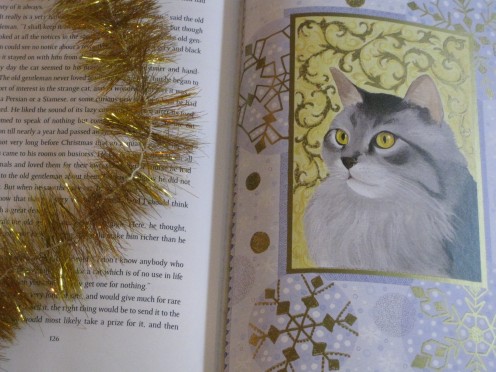
Story 11. The Story Of A Cat
This captivating story by Mary De Morgan is about a wealthy old gentleman which was miserly and cold-hearted, very much like Mr. Scrooge. On Christmas day, he rebuffed the requests of a beggar and then was puzzled when the beggar went away laughing and mumbling some words. The next day, he saw a big grey and black cat lying near his fireplace. Initially, he tried to drive away this cat but suddenly, he became fascinated with its unusual beauty. He decided to keep it till he found its owner. He wondered that how it came in as the doors and windows were closed, maybe through the chimney as told by his cook. He looked after the grey and black cat with great care. He slowly grew fond of the cat. One day, his colleague discussed with the gentleman about the upcoming cat contest, its grand prize and the value of the grey and black cat. The greedy gentleman became overly enthusiastic but the cat seemed displeased. One day, a stray and bony brown cat suddenly showed up at the gentleman's house. Disgusted with its dull appearance, he threw it out with his own hands. Later the same day, the same brown cat reappeared much to the delight of the grey and black cat but was thrown out again by the pitiless gentleman. Then the gentleman offered food to the grey and black cat but it refused to eat and began to grow weak day after day. This worried the gentleman a lot. He even consulted the pet doctor and his colleague about the sudden illness of the grey and black cat. His colleague suggested that the gentleman should kill the cat for its rare and invaluable fur. The gentleman furiously told his friend that he will not kill it and did not care about money which surprised his friend. Then the pitiful mewing of the the brown cat caught the gentleman's ears and he allowed it inside his house. He gave it milk. Then he put more milk in the saucer and suddenly, the grey and black cat came and drank it up, much to the astonishment of the gentleman. He then offered both of them fish and soon forgot about the cat contest. He felt glad that the grey and black cat recovered quickly. Some days later, when the gentleman was sleeping, the grey and black cat touched his face and made purring noise as if it wanted to bid him farewell. The gentleman did not understand this. Soon afterwards, he noticed the brown cat lying down alone. It looked plump and well-fed thanks to his care. He searched for the grey and black cat throughout but did not find it. He looked at the brown cat and decided to let it stay in his house. His cook laughingly told him that it must be a fairy in the disguise of a cat to teach him a lesson in kindness. From that day onwards, the gentleman was totally reformed.
Moral lesson inferred from this story:
This story taught us to help the needy and less fortunate. Roll up your sleeves and work together towards building a better world for humanity.
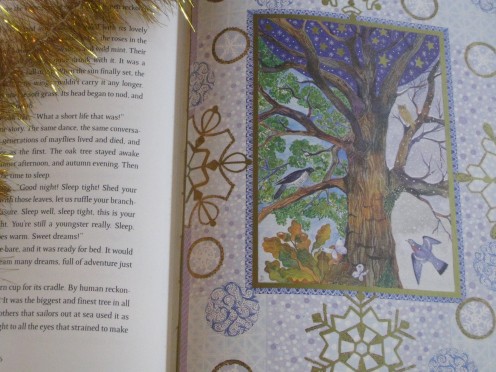
12. The Last Dream Of The Old Oak Tree
Last but not the least, this wonderful story by Hans Christian Andersen is about a three hundred and sixty-five years old oak tree and its longevity. The highlight of the story is the brief conversation between the oak tree and a mayfly. The oak tree told the mayfly that the latter's life-span was too short which was just one day compared to its thousand years. The mayfly was optimistic and enjoyed its life to the fullest before dying at the end of the day. When Christmas Eve approached, the oak tree went into winter sleep and started dreaming about beautiful things associated with nature that it had witnessed throughout its life. Notably, the last part of its dream was about heaven. Suddenly, the strong storm came and uprooted the oak tree from the earth. Thus its lengthy life came to an end. This could indicate that the oak tree died happily just like the mayfly did.
Moral lesson inferred from this story:
This story taught us to pursue our dreams consistently and live our lives to the fullest. We all should work to make it come true and also make life beautiful not only for ourselves but also for the whole world for the sake of humanity.
An important conclusion
Now these stories serve as ideal lessons of human virtues. In each story, there is a hidden message which could be identified by the readers. Some of these stories remind us of other fairy tales - the story of the the nutcracker has a 'Beauty and the Beast' element to it and the story titled 'Why The Sea is Salt' is similar to 'The Magic Porridge Pot'. This could imply that we are living in a small world but such stories all have a common message for readers - the importance of humanity in our world.
You can find this same book on Amazon
Cast your vote in this poll
Which one of the following Christmas fairy tales is the most inspiring?
Remember to gift your little loved ones with awe-inspiring books
Surprise your kids or grand-kids or nieces and nephews with uplifting books which not only captivate them with the beauty of Christmas but also teach them about human values and morals. Ensure that such books contain thought-provoking lessons that have an everlasting impact on the young readers. Remember that children are the future of the world and it is high time to pass the torch to them.
Reading books has done wonders for me since childhood. Thanks to this good habit, I gained proficiency in English and vocabulary, being aware of what is happening in the world and above all, the sheer joy of reading books. Surprisingly, the first story reminds me of my childhood incident when I was not going to school and inability to talk properly due to my hearing impairment. Thanks to my parents' attentive upbringing, I started reading and speaking well at the age of seven! Also this same story and another story about the fir tree remind me of my acquisition of story-telling. Here I narrated twelve stories to all of you, each with a special message that sum up to unite humanity in our world for a better tomorrow!
Wishing all of you Merry Christmas and Happy New Year!
Copyrights © 2012 by Ishwaryaa Dhandapani
A note of thanks to Bill Holland (billybuc)
I am grateful to Bill Sir for giving me an opportunity to contribute to his thoughtful movement named 'Humanity One World' (H.O.W.) by writing this hub in honor of the same. If you are eager to be part of this worthy cause, join H.O.W.....Humanity One World on Facebook. The more we get together, the stronger our contribution will be in the name of humanity in our world!


